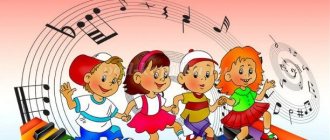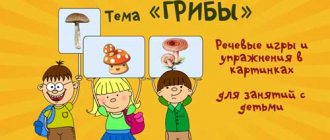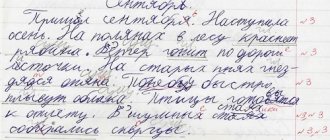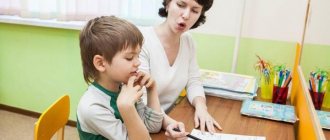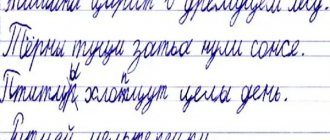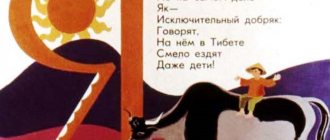A four-year-old child very quickly learns what interests him. He has a well-developed imagination and word creation. He loves to make up stories and tell them. At this age, it is very important not to ruin his nascent creative abilities. Developmental activities for children 4 years old should be as informative and interesting as possible. Parents should be prepared for a wide variety of unexpected questions from their child. We must begin to master the basics of mathematics, grammar and other disciplines. After all, school is coming very soon.
How to organize classes
To teach a child, you do not need to be a teacher with many years of experience. You can do everything yourself no worse than in special classes. Any activity should resemble a game and be fun. Even the most serious subjects are easier to learn through play. Plan your activities for the week ahead. This way you will be able to fully prepare for them, find the necessary materials and decide what you will pay more attention to this time.
Classes must be regular. It is imperative to allocate time for them in the child’s daily routine. It is necessary to develop logic, arithmetic, speech, literacy, creative skills, and outlook. Also, don’t forget about physical exercise. They should be given regular attention. You need to distribute subjects as evenly as possible and study each a little throughout the week. But the child needs to like it. If he doesn't want to study numbers at the time you schedule, try switching to something else.
When creating a lesson plan, remember that children get tired very quickly and cannot study for too long. Therefore, do not try to complete all disciplines in one day. And if your child goes to specialized clubs or sections, then try to consolidate the material covered in class at home.
Practical tasks for children 4–5 years old
Parents should help their child consolidate and deepen existing knowledge. Tasks for children need to be constantly made more difficult. Over the course of a year, the child must learn to correctly use prepositions, count to ten, distinguish between right and left sides, what is more/little, more/less, and draw a line with a pencil without lifting the pencil. If your baby has learned this before, then don’t stop and move on. Otherwise, the child will no longer find it interesting to study.
Tutorials and examples
The practical lessons themselves can be carried out using already prepared manuals and examples for boys and girls.
This could be some kind of visual materials, stickers, tasks for the development of logic, writing and speech.
All this can be taken from a ready-made one. This will simplify the entire learning process.
Reading and writing
If your goal is to teach your child to read and write before school, then use a special primer for preschoolers. It has everything you need to teach your baby to put letters into syllables, and syllables into words. You can not limit yourself only to these developmental activities for children 4–5 years old, but play special games. For example, guess a letter for your child, and let him find it in the primer and point to all the objects that begin with it. This will help him learn to highlight the first syllable in words.
Then you can do it at speed. And after some time, the task can be complicated by searching for several letters at the end of words. Another option for the game: stick up pieces of paper with the initial letters of different objects around the house so that the child remembers. And then you can complicate the task and glue the letters incorrectly so that the child looks for mistakes.
Cards and visual aids
For any discipline, it is recommended to use special educational cards that depict interesting pictures or tasks. For example, they are very useful in studying sides. You can find a colorful or funny drawing that clearly shows where the right side is and where the left side is.
And numbers and the ability to count can be reinforced with the help of coloring books, on which you first need to connect the dots in order. This will be very interesting for the child, because he will be curious about what kind of image is encrypted there. Story pictures will be useful for speech development. For example, take a drawing, show it to your child and ask him to write a story. To make it more complete, ask leading questions. Paired cards are useful for developing logic. These are, for example, games in which you need to find for one image another associated with it: a shoe for a foot, a glove for a hand, and so on.
Learning mathematics
The first thing that comes to mind here is numeracy skills. Because it is still difficult for a child to master calculations. How to teach a preschooler to count?
A child can understand how a specific number relates to the designated number, for example, using counting sticks or cards that depict the number and various objects in the corresponding quantity.
To reinforce counting in order, you can use coloring pages that require you to connect numbered dots.
Also, the consolidation of ordinal counting is facilitated by the constant recounting of surrounding objects: houses, benches, birds, steps on the stairs, apples in a vase.
Mathematics is also geometry. By this age, the child should already know basic geometric shapes. Now it is important to consolidate this knowledge, as well as develop the preschooler’s thinking by playing interesting games with figures. For example, you can fold triangles into rectangles, squares, rhombuses, and other triangles. You can make rectangles from squares.
It is also interesting for children at this age to draw using geometric shapes (everyone knows that a triangle is a skirt, a circle is a sun, a triangle with a rectangle is a house). Also, the child can already compare figures by color, shape, size.
Types of child development
Child development can be:
- Physical.
- Mental.
- Emotional.
- Sensory.
- Musical.
- Rechevym.
- Cognitive.
- Tasks for attention.
- Fine motor skills tasks.
- Mathematical.
- Creative.
Enough time should be given to each of these types of development over the course of one week so that the child is diversified. Don't forget or ignore any of them. Although, if the baby doesn’t like something, try switching to other tasks. And later you will return to what the baby did not like, but with different tasks.
Physical
A four-year-old baby needs a lot of movement. While practicing with your child, practice agility, coordination and endurance skills. To do this, offer your child gymnastics, dancing, swimming, cycling and other physical exercises. Don't forget to also just play outdoor games. For example, if you choose gymnastics, then it is advisable to spend about 20 minutes on it several times a week. It's better to do this during the day and not before bed.
It's better if these are group classes. This way the baby will strive to keep up with others, and it will be much more fun for him.
What and how to develop in classes with children aged 4 years
- Fine motor skills, sensory skills. Model from plasticine, clay; assemble the constructor; make crafts from natural materials and cereals; weave from ropes and elastic bands; plant beads; draw with sand, sculpt from it; paint and draw with pencils and brushes, using different hands and holding the tool in different ways, making different strokes.
- Logic, thinking. Play board games for children (lotto, dominoes, go through mazes); solve riddles; play “What happens if...? (the ball will fall into the water, it will rain, etc.)"
- Attention, memory. Ask questions, for example, about what the child saw on the street when he was walking - “What color was that dog, who did you meet on the playground, what was he wearing, what color, etc.”; ask to talk about a story from a book you just read; collect construction blocks from memory, draw from memory; play reverse cards with pictures that the child must remember, etc.
- Grammar. Learn letters and names of objects starting with that letter in a playful way. When learning letters, you can simultaneously begin to study simple syllables.
- Arithmetic. Learn numbers and counting, addition and subtraction of simple numbers in a playful way.
- Speech development. Learn rhymes. During the game, ask the child to tell, offering him different items and objects: “What kind of object does he see in front of him? What is he doing? What is it for?
- Fantasy and creative skills. Draw; sculpt; assemble the constructor; do crafts; be sure to learn songs and sing with the children; dance to music, learn joint dances; come up with puppet shows, improvise with the plot.
- Physical skills. Dance, with ribbon, sword; play Twister and other outdoor games; do children's yoga; walk on bicycles and scooters, play outdoor games.
- Knowledge of the surrounding world. Study the time on the clock; seasons and months; weather features; animals and where they live; urban and natural sites; forms; textures; smells; colors, etc.
Mental
The psyche of children develops incredibly quickly. They expand the range of their emotions and become more sensitive to the reactions of adults. Therefore, try to approve all the successes of the preschooler and respect his wishes. This will help him develop a positive self-image. Classes for mental development should include exercises on attention, memory and thinking.
Teach your child to generalize objects according to a certain characteristic, assemble an image from parts, determine the similarities and differences of pictures and toys, select identical objects from a group, repeat a certain sequence of movements, fold a construction set according to a pattern, identify the odd one out, find antonyms for words, memorize the plots of pictures, retell fairy tales, descriptions of events. It is very useful at this age to learn funny rhymes and songs.
Emotional
Emotional development is also important for the baby. At four years old, he begins to understand the relationships between people, can notice changes in the mood of the person who is next to him and learns to express his own emotions. A preschooler already knows how to show empathy and attention. He senses how others treat him.
Communication is fundamental in the development of emotions. Express your emotions. Explain to your child how you feel in different situations. And tell us what different emotions are called and why they may arise. It is desirable that there are no quarrels, anger or discord in the family. The child is too sensitive to this. You can tell instructive tales so that the child understands, using the example of their characters, what to do in different situations, and what is better not to do. Play out scenes with him using toys.
Physical development
At 4 years old the child is physically developed. This age is characterized by extreme mobility, because the baby understands the capabilities of his body and tries to test them as quickly as possible. Skill development is improving every day:
- the child runs well and quickly;
- easily climbs on and off a vertical ladder;
- jumps in height and length;
- throws the ball in a given direction far and accurately, learns to play football;
- pulls up on a bar or rings (with the help of an adult);
- overcomes obstacles along the way.
A four-year-old child can already be taken to the sports section. The classes will strengthen the muscles and direct the baby’s energy in the right direction.
Sensory and musical
Through sensory activities, children improve their sense of hearing, smell and touch. For the development of a 4-year-old child, he should be encouraged to guess objects by touch. This way he will learn about the existence of hard, soft, rough, smooth, warm and cold things. Include smell and taste in activities and games. At four years old, children already know some musical instruments, are familiar with some songs and music of different rhythms. They already have their favorite songs and melodies that they will sing along to and dance to.
Turn on music more often and let your baby dance. Invite him to repeat some movements after you. And also sing together or have karaoke.
Musicality, sensory, movement
One of the main factors in the proper development of a preschooler at this age remains movement. He must move a lot. This increases his agility, endurance, coordination, develops muscles, and strengthens the skeleton. Therefore, the lesson program should have a lot of space for gymnastics, dancing, exercises, cycling, and all kinds of outdoor games. You can enroll your preschooler in some sports section.
And if motor activity is accompanied by well-chosen melodies, the child will also receive musical development. He will have an improved sense of rhythm, perception of fast and slow music, sad and cheerful.
Advice
At this age, a preschooler can be given to listen not only to children's melodies, but also to classical ones. He already has his favorite tunes, to which he begins to dance or hum.
Sensory perception is, first of all, the development of tactile sensitivity. The baby should have the opportunity to touch a variety of materials and textures: soft, hard, smooth, rough, fluffy, prickly, warm, cold. A good game is to recognize objects by touch without seeing them (for example, by taking them out of a bag).
Improving fine motor skills plays an important role. This helps improve all mental abilities: thinking, speech, memory. In addition, good fine motor skills prepare the hand for writing: the child will hold the pen correctly, the hand will strain and get tired less. Games with small objects and materials are good for this purpose: cubes, construction sets, mosaics, sand, cereals. This also includes finger games, tying shoelaces, fastening zippers, unscrewing corks, drawing, appliqués, and modeling.
Speech
Speech develops in a child at this age at an incredible speed. The biggest influence on him is communication with parents and other children. Thanks to this, the toddler’s vocabulary increases, he learns to construct sentences and express his thoughts in words. Many people at four years old do not yet know how to pronounce sibilants and “r”, so it is worth spending more time practicing the pronunciation of these sounds.
To stimulate your baby’s speech development, teach him songs, rhymes, look at and discuss pictures, reproduce the plot of fairy tales or invent your own, read and discuss stories, listen to audio recordings of fairy tales, make riddles, share your impressions of the past day, practice articulation, study letters and sounds, divide words into syllables.
Divide these exercises into different sessions and practice them constantly. You will see that thanks to them, your child will speak very beautifully and without mistakes. If the child has serious problems with speech, and classes are given to him with great difficulty, it would be useful to see a specialist.
Household skills
The child must be able to perform the necessary hygiene procedures without reminders: brushing teeth, washing hands before eating and after going outside, monitoring physiological needs even at night. Some kids by this time prefer the toilet to the potty. Children eat independently using cutlery and a napkin.
When dressing for a walk, a four-year-old child chooses things according to the weather and easily dresses and undresses. Many people already know the front and back of their clothes, their right and left feet, and how to put on their shoes correctly.
Fine motor skills
Fine motor skills are one of the important points in a child’s development. It helps develop speech and other skills because it strongly interacts with different areas of the brain. Therefore, let your child play with sand, cubes, construction sets, beads, cereals, beans, and so on. Be sure to do finger exercises, teach your little one to tie knots, fasten and unfasten zippers, buttons, buttons and hooks. Draw and sculpt more, make appliqués and create various crafts from natural materials. It is very efficient to transfer and sort different grains.
Cognitive
Children at this age are actively exploring the world. And cognitive development should include classes on memory, thinking, logic and attention. At home, you can prepare special thematic cards with pictures and words. For example, you can group them into seasons, land transport, professions, and so on. Group whatever you have enough imagination for.
And in class, show your child pictures and pronounce the words clearly. Tell us about the features of things. Also ask to name the colors and shapes of objects. And then you can complicate the task. For example, you name some things, and the baby must generalize and group them. Study parts of the whole with your child and learn to find what is superfluous.
Educational tasks with words
1. On the sheet in the center are written words in block letters: sea, flower, sun, snail. Match the word and the picture, draw a line.
2. Different words are written on the sheet: mom, cat, dog, dad, summer, spring, tree, flower. You need to cross out the letter A in the words. The baby learns perseverance and attentiveness.
3. Circles and triangles are drawn on a landscape sheet. The child is given the task to draw the letter M in each circle, and the letter C in each triangle.
4. “On the contrary.” An adult names any word, and the child must find the opposite meaning. For example: an adult says “hot”, a child answers “cold”, etc.
5. “A kind word.” Name the object, and the baby chooses an affectionate word to designate it. For example: ball - ball, house - house, leg - leg.
6. "Fruits and vegetables." Place various pictures of fruits and vegetables in front of the child. There are many options for games: ask the young student to put fruits in a basket. Ask to choose the vegetables from which mom makes a salad for lunch.
7. “Find the odd one out.” Tell your child a set of words in which the words belong to the same group, but one word is superfluous. The child must identify the odd one by ear. For example: tree, grass, flower, snail. The extra word is snail. The child must give an explanation of why this particular word is superfluous.
To develop attention
It is important to teach your child to concentrate and notice details. He will really need this at school. In order to teach this to your toddler, ask him to repeat certain actions after you, cross out a certain letter in the text (you can make it more complicated, and cross out one and underline the other), play with him “edible/inedible”, “flying/not flying” . Another interesting game: touch parts of the body and name them, let the baby repeat after you, and then start making mistakes.
Attention - attention
In order for a child to grow up attentive, be able to concentrate and quickly respond to any changes, it is important to train his attention. You can start as early as 4 years of age. At the same time, it is also not necessary to purchase expensive manuals: the suitable “equipment” is always at hand.
For example, you can play these games.
- Variations on the theme “edible - inedible” (sweet - unsweetened, flies - does not fly, clothes - not clothes).
- "What's new?" (on the table, in the picture, in the guise of dad, in mom’s clothes).
- “Find the differences” (in two pictures).
- “Caravan” - the mother names the animal, the child repeats it and adds his own. Mom repeats both and adds a third. You need to repeat in the order in which the animals are named. They play until someone gets lost.
- "What changed?". During a morning walk, mother and child try to remember everything that surrounds them, and in the evening they compare what has changed (someone hung up the laundry, old women sat on a bench, a car drove up to the next door);
- Close your eyes and name as many different sounds as possible in the room (a clock, the noise of a refrigerator, the purring of a cat) or outside the window (cars driving, birds singing, the wind rustling).
- Close your eyes and tell what order is on the shelf, on the table, what mom is wearing.
It is important to start with easier tasks, gradually making them more difficult, and not forgetting to praise your child for success.
Mathematical
The kid needs mathematics because he is about to go to school and it would be nice for him to already have some kind of foundation before that. Teach your baby numbers, counting and geometry. But, as in previous cases, be sure to turn the learning process into an entertaining game.
Basic Geometry
Learn the basic geometric shapes: circle, diamond, square, rectangle, oval and triangle. First, just show them to your baby, and then ask him to choose the one you named from a number of figures. And later you can complicate the lesson and study their volumetric analogues.
Use images of figures, tables with examples from life, or you can even look for these figures in everyday life and conduct classes on them.
Numbers and numbers
By school, a child should learn to count to at least 10 and write these numbers. This is best done with the help of your baby’s favorite toys, special sticks, various figures or the “I Count It Easy” mathematical dominoes.
Equalities and inequalities
The child must master the principles of comparing objects: what is more and what is less. He should also learn to add equalities himself. This is also best done with toys. For example, tell your child a fairy tale, get to an important point and ask to divide the characters into equal parts so that they fit into two buses. Your imagination is very important here. Although there are also many ready-made tasks on the Internet that you can find and use in your training.
Logics
Four years is the best age to start developing logic. Encourage your child to find similarities and differences in the images. There are quite a lot of tasks for this, choose the ones you like and work on them. Practice searching for common qualities of one group of objects. For example, dishes. And also in searching for extra items in the group. Another fairly effective exercise is finding errors. The child should be able to find them not only in pictures, but also in words. For example, in the sentence: “In winter I always swim in the lake.”
Games for children from 3 years old
Omelette. Cut out a circle the size of a plate from yellow colored paper and fold it in half. This is an omelette. We fill it with various little things (for example, old photographs, unexpected pictures, fragrant flower petals, raisins or coins for good luck). We serve the omelette on a plate and treat each other.
We empty our wallet. We pour all the coins from the wallet onto the table and sort them.
Let's hum. One of the players begins to hum a melody. Others should recognize her.
Birds fly high. Players drum their fingers on the edge of the table. Everyone takes turns naming an animal. If it flies, everyone raises their hands; if it doesn’t fly, they continue to drum. If someone makes a mistake, he gives away his forfeit.
We draw on fabric. We use textile paints to paint fabric, for example, an old T-shirt or a sheet.
Blind chicken. With our eyes closed, we try to walk from one room to another without hitting anything.
Laughing is prohibited. We are trying to make our friend laugh by telling him all sorts of nonsense. His job is to stay serious. Who will last longer?
Running with an “egg”. We put a ping pong ball on a teaspoon and run around the entire apartment, trying to keep the ball on the spoon.
Chatterboxes. Let's talk quickly. Who can do it longer?
We glue the collage. We tear newspaper or magazine pages into pieces. From this we glue a colored collage.
Who will blow next? We blow on the bottle caps so that they fly off as far as possible.
Blot pictures. Spray ink onto paper. Fold the paper with the blot inward, then unfold it again. Draw a picture from the prints.
We depict a snake . The more players, the better. We run around the apartment one after another, doing the same movements. The guide tells the players what they should do, such as crawl around the table or tumble around the room.
“Inflating” the pictures. Spray different paints on the paper, adding more water. Blowing through a straw produces multi-colored spots.
We dress up thematically. Prince and princess: We glue crowns from gold paper and put on a cloak. Astronaut: we make a helmet from a cardboard box, an oxygen tank from plastic bottles. Firefighter: colander as a helmet, dad’s jacket and belt, vacuum cleaner hose, etc.
Veterinary hospital. We put soft toys in bed and treat them: bandage them, give medications, measure the temperature, apply compresses, etc.
Let's keep our balance. With arms extended to the sides, we walk, like a tightrope walker, along the very edge of the carpet or a jump rope stretched out on the floor.
We score goals. Place the pan on the floor. Or we use bottles to mark gates on the floor. From a certain distance we throw ping-pong balls. Each hit earns a point.
Forfeit. We collect forfeits from the players. We ask others: “What should the player who owns this forfeit do?”
Let's play ice cream parlor . Fill a yogurt cup with fruit juice, yogurt, etc. and freeze it. Decorate the ice cream and serve.
Ping pong in the room. We sit on the floor. Using cardboard, hit the ping pong ball against the wall.
Educational activities for children 4 years old in a playful way
Play is the main form of activity for a child. You just need to include a little training in it. All games can easily be turned into educational games. And almost everything in the toy basket can be turned into educational material.
Constructors
A construction set is one of the most useful toys for development. Take not ordinary sets, but those that include auxiliary items and characters. For example, there are kits with animals or with letters printed on blocks. You can ask your child to come up with new shapes that can be made from blocks, or to imagine what his structure would look like in real life. And if the set includes additional characters, then you can act out scenes and create an entire fictional city. Offer your child your construction plan, drawn on a piece of paper, and let him bring it to life. Or make a labyrinth out of blocks and ask your child to walk through it to you.
Board games
Board games are very different. Preschoolers can play with puzzles to learn the alphabet, dominoes, various “tricks” or cards. This will be interesting not only for the child, but also for you. Moreover, in this case you do not need to come up with any tasks. The manufacturers have already done everything for you, and you just need to find the time to play them. But this can also be considered their disadvantage at the same time, since you will not be able to come up with anything new other than what is written in the instructions.
Favorite toys
Use any of your baby's toys to develop his skills. For example, if your child loves cars, then stick letters of the alphabet or numbers on them, and on the other side place a parking lot with words that start with these letters or with the same numbers. And let the kid park his cars correctly.
And if your child cannot live without dolls, then give them candies and count them, or solve problems on how many sweets someone has under different conditions. Another wonderful game option is the store. Here you need to count, and subtract, and multiply, and talk with the “buyer”. This game develops many different skills.
Available materials
Crafts made from scrap materials will greatly help in developing a child’s creative abilities. You can use a wide variety of materials: cereals, household items, paper or special creative kits.
You need to make from them what you are currently studying: numbers or letters. And how to make the craft itself, what to use and what to attach it with – it’s all your imagination.
Paper
At 4 years old, you can safely try to create origami with your child. There are a lot of schemes. Take paper and the simplest versions of origami; your child should enjoy making different animals. You can also create various applications from paper, cardboard and glue. Let him use children's scissors to cut out the elements you drew, and then glue them on. You can decorate educational notebooks with paper products, then the child will like them more. Or even use special stickers for your efforts.
Natural materials
You can make various crafts with your child from what surrounds us all the time. These can be cones, pebbles, twigs, and so on. You can use them to create animals, birds or even little people. And with the help of threads, buttons and paints they can be turned into fairy-tale characters.
Threads and balls
Various ropes can turn into dolls and animals. And you can create beautiful patterns from threads by weaving them and tying them to mesh fabric.
Just give your child the necessary materials, show him the first few movements, and then just watch your baby's enthusiastic work. Sometimes he may need your help, don't refuse. Offer your options for patterns or toys that can be created. Do everything together. And communicate constantly. Add an element of counting, naming letters or numbers to any activity.
Speech development
A four-year-old child's vocabulary is growing rapidly. He masters more and more new words, actively using familiar ones, learning the meaning of unfamiliar ones. Speech does not represent individual phrases, but a coherent text using complex syntactic structures: subordinate clauses and homogeneous members. Minimum speech skills of a child at 4 years old:
- clearly pronounces vowels and consonants;
- knows how to answer questions, conducts a dialogue logically;
- composes a coherent text of up to 6 sentences;
- easily describes what is shown in the picture, can give a complete description of the toy, seen, heard;
- names first, patronymic and last names, knows the names of his relatives and friends, in kindergarten calls the teacher by first and patronymic;
- states his age, home address;
- distinguishes the intonation of the speaker, he can give any intonation to his speech;
- uses singular and plural;
- does not confuse the masculine and feminine genders, coordinates words in gender, number and case, uses prepositions correctly and appropriately;
- in conversation uses all parts of speech, including interjections, introductory and onomatopoeic words.
It is possible that the child may still confuse the concepts of “yesterday,” “today,” “tomorrow,” and the names of meals: “breakfast,” “lunch,” “dinner.” The norm is the retraction of hissing sounds and [r]. In general, the speech of a child of this age is understandable not only to loved ones, but also to strangers.
